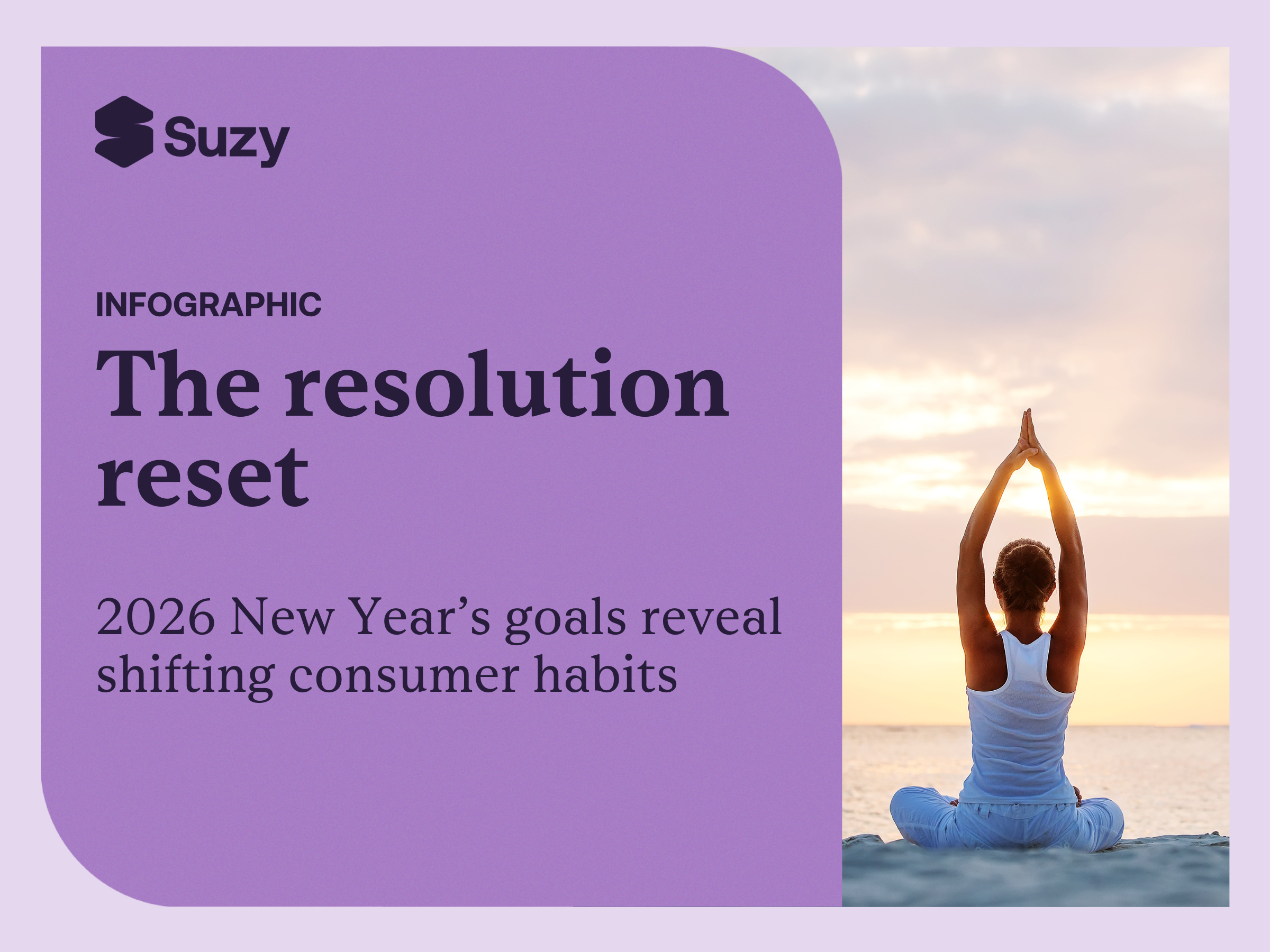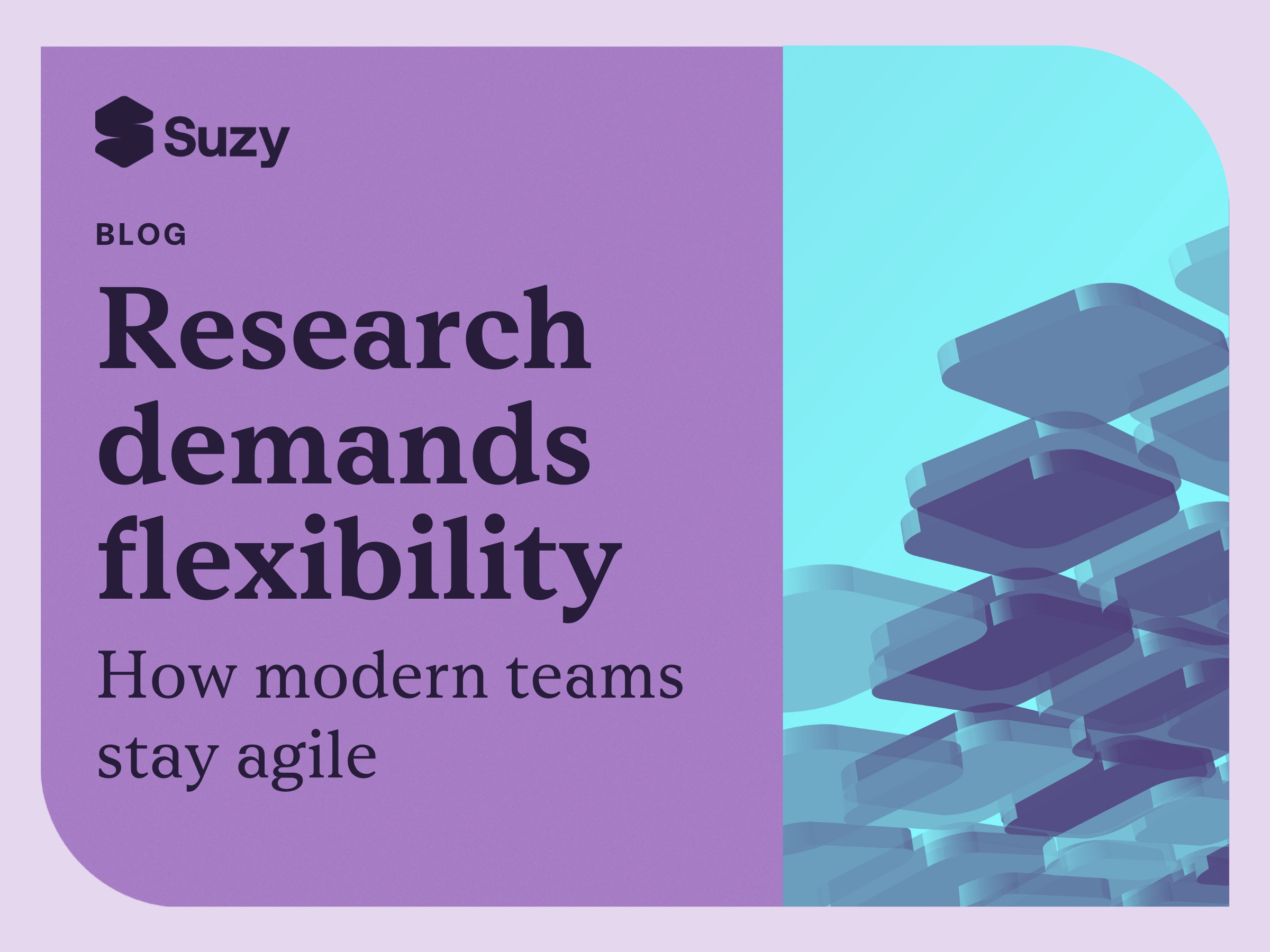Generative AI has taken the world by storm. With powerful, natural language and image processing and generation, generative AI can create content, make videos, design images, and much more. It is already disrupting the market research space. From generating surveys to analyzing qual responses, there are a lot of opportunities for generative AI to change the way market research is done forever.
While that possibility is exciting for some, it can be a little scary for others—especially as people worry about potential job loss. So will it replace market researchers? Suzy’s VP of Market Research, Laima Widmer, doesn’t think so. It will, however, have a positive transformation. Let’s explore the history of technology in market research to better understand how this change may impact market research, and how market researchers can use generative AI as part of their toolkit.
Technology has always changed the way market researchers work
From the days of pen-and-paper surveys, technology has always disrupted the market research industry. First, results were scanned into computers to be analyzed instead of needing to be done manually. Then, computer-assisted telephone interviews sped things up even more. Next, everything moved online. Disruptions came with the introduction of mobile technology and agile solutions. With every shift, there have been concerns about quality, reliability, and data representation.
Now, it’s unusual for market research to be conducted without online surveys or mobile devices. Technology isn’t going away. So, how can market researchers embrace tools like generative AI and incorporate them into their day-to-day tasks?
Embracing the benefits of generative AI for market research
Generative AI has the potential to take what are historically labor-intensive tasks and shrink them down, which will help market researchers be more efficient when they execute a project.
There’s also a tremendous opportunity for generative AI to support the growth of our industry through improved data analysis, including better predictive modeling and targeting. With faster, high-quality insight generation, generative AI can help market researchers gain efficiencies when it comes to understanding their consumers.
Right now—as in most other industries—generative AI works well when it comes to simpler tasks, like basic survey development and open-ended analysis. Generative AI can help translate key findings into conclusions and make recommendations around specific business issues. Then, market researchers can (and should) spend time enhancing whatever the AI created to create more robust output.
Let’s take a look at some areas where we can use generative AI in market research, and some prompts to help you get started.
Basic market research prompts for generative AI
When using generative AI for market research tasks, it’s important to create very clear prompts. Be as detailed as possible, and phrase your prompts as you would think about analysis. For example, you could ask:
- Qualitatively, what are the key themes that have come up in these parts of the conversation?
- Quantitatively, what do the patterns of the data suggest about X, Y, and Z?
Continue adding prompts to get to the insights you need, but remember to set an endpoint as well, as unlimited prompting could become the enemy of the good. Let’s take a look at some specific use cases for generative AI in market research and some example prompts you can use.
Open-ended questions
time-consuming process, generative AI can speed up the analysis of open-ended text and transcripts of video open ends, helping market researchers pick out key themes and summarize their findings.
Examples of prompts:
- What are the core themes of this open-ended question?
- Can you find the top core themes for these open-end verbatims?
- Summarize the conversation from the interview with an ex-consumer of [BRAND]. What are the key points and thoughts of that ex-consumer?
- Identify any keywords that stood out in the following open-ended answers.
Survey development
While AI can generate surveys, there are some hits and misses—especially when wading into medium and complex theory territory. Still, as the software learns, it will get better at producing questions down the road. The key is to train the model through best practices.
Even in its basic stage, generative AI can help draft a survey, speeding up overall development. With clear client objectives, target audiences, and other core inputs, these tools can generate a decent starting point for a survey draft. It will, of course, be critical that the questionnaire follows best practices, and it’s always wise to check the outputs of AI.
Examples of prompts:
- Generate a survey based on [specific objectives] and this [target audience].
- Create a five-question screener survey to identify [professions].
- Draft survey questions for monadic testing for [concept A] and [concept B].
Proposal creation, learning plans, and executive summaries
Generative AI may be able to help with proposal creation, learning plan development, and executive summary development. Widmer says that AI can absolutely recommend a scope of work, but researchers must ensure it makes sense and that it's the most efficient recommendation.
Using generative AI tools
If you’ve used a generative AI tool, like ChatGPT, to complete a task or answer a question, you know the accuracy of its output is only as good as the quality of your input. Then, there are concerns about data. When you input market research insights into a generative AI tool, how can you be certain that it’s safe and secure?
It’s wise to not only vet the responses you get from a generative AI tool, but also to vet the tools you use. Many tools aren’t built with the modern enterprise in mind, where security and accuracy are paramount. So, the first thing researchers need to do when considering an AI tool is whether it has been built responsibly or not.
When Suzy first began to develop our AI features, we recognized there was no value in having any AI tools at all without accuracy and trust in their outputs, compliance, and trust in how your data is handled, and transparency and trust in how you interact with AI within our platform.
At Suzy, we’ve gone to great lengths to help keep our clients’ data safe and that any outputs from our AI tools are accurate and actionable.
We recognized that to create AI features that produce accurate, high-quality, and trustworthy outputs, our Center of Excellence team—the market researchers at the core of Suzy—would have to drive the design and development of the prompts that are built into each feature.
Our COE team has worked alongside our product team to develop products including:
- Biotic, AI-Powered Bot Recognition Assurance Technology: Designed to ensure the quality of your panel, Biotic detects and isolates AI-powered bots that might try to participate in your research so you get maximum data quality.
- AI Screener Generation: This tool helps you create screeners for your surveys. It uses AI to generate screener questions based on your target audience.
- AI Suzy Live Summaries: This feature uses AI to provide real-time summaries of open-ended responses in Suzy Live.
- AI VOE and TOE Summaries: These tools use AI to summarize Verbatim Open-Ends (VOEs) and Text Open-Ends (TOEs) in your surveys.
Then, there’s the data piece. Suzy leverages a private instance of a generative AI tool, with enhanced controls to help protect your data and keep it out of public AI models like ChatGPT.
And we’ll never opt you automatically into our AI features. It’s entirely up to you whether you decide to use them or not—but we do recommend them for powerful, fast insights.
The changing role of the market researcher
With increased efficiency, generative AI has the potential to change the job of a market researcher, increasing and redefining the scope of what teams can do. Instead of being down in the nitty-gritty of survey development and data analysis, researchers will have an opportunity to be more strategic instead of operationally oriented. Now, market researchers should work on developing skills to think from a macro perspective around client relationships and about opportunities to answer business questions.
As tempting as it may be to outsource numerous tasks to generative AI, market researchers need strategy and discipline to use it effectively. Otherwise, results and outcomes could be all over the place. As market researchers, we must do the best we can to harness it in a way that makes us more efficient in executing our goals and also frees us up to do other kinds of things outside of the things that an AI can easily do.
The impact will be pretty profound on the market research industry, said Widmer. “I think it's all going to be good because it's going to be about efficiency and accuracy, the level of insights, and how quickly those can get generated. So I think that this will allow research to move as fast, if not faster, as our marketplaces are changing.”
As for right now, it’s a good idea to stress-test the technology and see what it can do. But what does it mean for market researchers who are newly entering the field?
What do new market researchers need to know as they enter the industry?
As new market researchers enter the industry, they must grasp the fundamental principles of conducting effective research, even with the growing role of AI. Although AI continues to improve and can generate questions based on best practices, understanding the reasoning behind specific phrasing is key.
Novice or new market researchers should exercise caution when utilizing AI-generated content and avoid launching surveys without thorough examination. It's essential to reflect on research objectives and recognize the subtleties of how questions are posed to respondents. Moreover, continuous self-education about established research methods will help in avoiding potential pitfalls associated with AI.
Last words
The market research industry is changing. While change can be exciting, it also means adapting our skill sets and even the way we think about market research. To keep up with generative AI and the implications and possibilities it offers our industry, insights professionals should look for ways to embrace these tools through experimentation. As the tools learn and get better, we may see a real payoff in creating efficiencies that can help us scale our work and better meet client needs.
At Suzy, we are always looking for ways to move at the speed of culture. Stay tuned for announcements on how Suzy is incorporating AI into its platform and sign up for our newsletter to stay up-to-date with what’s on the horizon.
.webp)





.png)

